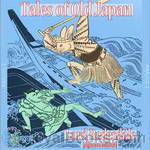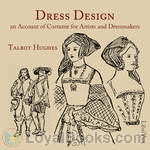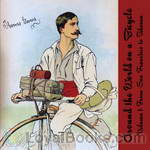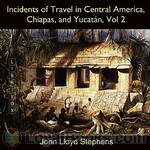|
Books Should Be Free Loyal Books Free Public Domain Audiobooks & eBook Downloads |
|
|
Books Should Be Free Loyal Books Free Public Domain Audiobooks & eBook Downloads |
|
Art |
|---|
|
Book type:
Sort by:
View by:
|
By: Apsley Cherry-Garrard (1886-1959) | |
|---|---|
 Worst Journey in the World, Vol 1
Worst Journey in the World, Vol 1
The Worst Journey in the World is a memoir of the 1910–1913 British Antarctic Expedition led by Robert Falcon Scott. It was written and published in 1922 by a survivor of the expedition, Apsley Cherry-Garrard, and has earned wide praise for its frank treatment of the difficulties of the expedition, the causes of its disastrous outcome, and the meaning (if any) of human suffering under extreme conditions. | |
By: Richard Henry Dana, Jr. (1815-1882) | |
|---|---|
 Two Years Before the Mast
Two Years Before the Mast
| |
By: John Charles Van Dyke | |
|---|---|
 A Text-Book of the History of Painting
A Text-Book of the History of Painting
A TEXT-BOOK OF THE HISTORY OF PAINTINGBY JOHN C. VAN DYKE, L.H.D.PREFACE.The object of this series of text-books is to provide concise teachable histories of art for class-room use in schools and colleges. The limited time given to the study of art in the average educational institution has not only dictated the condensed style of the volumes, but has limited their scope of matter to the general features of art history. Archaeological discussions on special subjects and aesthetic theories have been avoided... | |
By: Carolyn Steward Taylor | |
|---|---|
 Werewolf -- Five Pieces
Werewolf -- Five Pieces
Five stories and essays about werewolves. | |
By: Charles Alexander Eastman (1858-1939) | |
|---|---|
 Indian Child Life
Indian Child Life
The author was raised as an American Indian and describes what it was like to be an Indian boy (the first 7 chapters) and an Indian Girl (the last 7 chapters). This is very different from the slanted way the white man tried to picture them as 'savages' and 'brutes.'Quote: Dear Children:—You will like to know that the man who wrote these true stories is himself one of the people he describes so pleasantly and so lovingly for you. He hopes that when you have finished this book, the Indians will seem to you very real and very friendly... | |
By: Wassily Kandinsky (1866-1944) | |
|---|---|
 Concerning the Spiritual in Art
Concerning the Spiritual in Art
Published in 1911, Kandinsky's book compares the spiritual life of humanity to a pyramid -- the artist has a mission to lead others to the pinnacle with his work. The point of the pyramid is those few, great artists. It is a spiritual pyramid, advancing and ascending slowly even if it sometimes appears immobile. During decadent periods, the soul sinks to the bottom of the pyramid; humanity searches only for external success, ignoring spiritual forces. | |
By: Lord Redesdale (1837-1916) | |
|---|---|
 Tales of Old Japan
Tales of Old Japan
Tales of Old Japan by Lord Redesdale is a collection of short stories focusing on Japanese life of the Edo period (1603 - 1868). It contains a number of classic Japanese stories, fairy tales, and other folklore; as well as Japanese sermons and non-fiction pieces on special ceremonies in Japanese life, such as marriage and harakiri, as observed by Lord Redesdale. The best know story of these is "The Forty-seven Ronins" a true account of samurai revenge as it happened at the beginning of 18th century Japan... | |
By: Talbot Hughes (1869-1942) | |
|---|---|
 Dress Design: An Account of Costume for Artists and Dressmakers
Dress Design: An Account of Costume for Artists and Dressmakers
Explanations of Western European trends in men and women's fashion from prehistoric times to the Victorian Era. | |
By: Robert Wood Williamson | |
|---|---|
 The Mafulu
The Mafulu
The Mafulu, Mountain People of British New GuineaBy Robert W. WilliamsonINTRODUCTION By Dr. A.C. Haddon It is a great pleasure to me to introduce Mr. Williamson's book to the notice of ethnologists and the general public, as I am convinced that it will be read with interest and profit. Perhaps I may be permitted in this place to make a few personal remarks. Mr. Williamson was formerly a solicitor, and always had a great longing to see something of savage life, but it was not till about four years ago that he saw his way to attempting the realisation of this desire by an expedition to Melanesia... | |
By: Marie D. Webster (1859-1956) | |
|---|---|
 Quilts, Their Story and How to Make Them
Quilts, Their Story and How to Make Them
Although the quilt is one of the most familiar and necessary articles in our households, its story is yet to be told. In spite of its universal use and intimate connection with our lives, its past is a mystery which -- at the most -- can only be partially unravelled. (from the Introduction) | |
By: Lucy Abbot Throop | |
|---|---|
 Furnishing the Home of Good Taste
Furnishing the Home of Good Taste
FURNISHING THE HOME OF GOOD TASTEA BRIEF SKETCH OF THE PERIOD STYLES IN INTERIOR DECORATION WITH SUGGESTIONS AS TO THEIR EMPLOYMENT IN THE HOMES OF TODAY BY LUCY ABBOT THROOP Preface To try to write a history of furniture in a fairly short space is almost as hard as the square peg and round hole problem. No matter how one tries, it will not fit. One has to leave out so much of importance, so much of historic and artistic interest, so much of the life of the people that helps to make the subject vivid, and has to take so much for granted, that the task seems almost impossible... | |
By: Arthur Gray (1859-) | |
|---|---|
 Little Tea Book
Little Tea Book
After all, tea is the drink! Domestically and socially it is the beverage of the world. There may be those who will come forward with their figures to prove that other fruits of the soil—agriculturally and commercially—are more important. Perhaps they are right when quoting statistics. But what other product can compare with tea in the high regard in which it has always been held by writers whose standing in literature, and recognized good taste in other walks, cannot be questioned? (From the Preface) A Little Tea Book is a clever book about all things tea- Eastern and Western tea history, stories, culture, quotes, and even poetry. A good little read for tea lovers everywhere. | |
By: Thomas Stevens (1854-1935) | |
|---|---|
 Around the World on a Bicycle, Vol. 1
Around the World on a Bicycle, Vol. 1
Thomas Stevens was the first person to circle the globe by bicycle, a large-wheeled Ordinary. His journey started in April 1884 in San Francisco from where he cycled to Boston to take a steamer to England. Crossing England, France, Central Europe and Asia Minor before he was turned back at the borders of Afghanistan. He returned part of the way to take a ship to Karachi, from where he crossed India. Another steam ship brought him from Calcutta to Hong Kong, and from Shanghai he set over to Japan, finally ending his journey after actually cycling 13... | |
By: Ellen Churchill Semple | |
|---|---|
 Influences of Geographic Environment
Influences of Geographic Environment
INFLUENCES OF GEOGRAPHIC ENVIRONMENT ON THE BASIS OF RATZEL'S SYSTEM OF ANTHROPO-GEOGRAPHY BY ELLEN CHURCHILL SEMPLE PREFACE The present book, as originally planned over seven years ago, was to be a simplified paraphrase or restatement of the principles embodied in Friedrich Ratzel's _Anthropo-Geographie_. The German work is difficult reading even for Germans. To most English and American students of geographic environment it is a closed book, a treasure-house bolted and barred. Ratzel himself realized that any English form could not be a literal translation, but must be adapted to the Anglo-Celtic and especially to the Anglo-American mind... | |
By: William Scott-Elliot (?-1930) | |
|---|---|
 Story of Atlantis and the Lost Lemuria
Story of Atlantis and the Lost Lemuria
This volume contains two publications by W. Scott-Elliot, namely The Story of Atlantis (1896) and The Lost Lemuria (1904). A theosophist and believer of the Occult, W. Scott-Elliot gives us a description of the history and structure of Atlantis and Lemuria, along with what he considers evidence of this. The Story of Atlantis is prefaced by Alfred Percy Sinnett. | |
By: Barry Pain (1824-1928) | |
|---|---|
 If Winter Don't
If Winter Don't
Barry Pain's parody takes a sharp knife to ASM Hutchinson's best selling novel 'If Winter Comes'.We follow the professional and marital decline of long suffering (and loving it), Luke Sharper, as his marriage to Mabel flounders while his love for Jona flourishes. It could only end in tears.....Or could it? ( | |
By: Benedetto Croce (1866-1952) | |
|---|---|
 Aesthetic as Science of Expression and General Linguistic
Aesthetic as Science of Expression and General Linguistic
One of the earliest works of this Italian philosopher and literary critic, Aesthetic as Science of Expression and General Linguistic marks the beginning of Croce's elaboration of his highly influential ideas of aesthetics. Croce defines art in terms of intuition and expression, thus replacing beauty as the primary criterion for aesthetic evaluation. | |
By: Matthew A. Henson (1866-1955) | |
|---|---|
 Negro Explorer at the North Pole
Negro Explorer at the North Pole
In this fascinating memoir, Matthew Henson describes the incredibly dangerous, exhausting, and bone-chilling trip to what was until then the never-before reached point on earth, the North Pole. "Robert Peary is remembered as the intrepid explorer who successfully reached the North Pole in 1909. Far less celebrated is his companion, Matthew Henson, a black man from Maryland. Henson's gripping memoir, first published in 1912, tells this unsung hero's story in his own words. Henson...was indispensable to the famous explorer's journey; he learned the language of the Eskimos, was an expert dog-sled driver and even built the sleds... | |
By: Frank Berkeley Smith (1869-1931) | |
|---|---|
 Real Latin Quarter
Real Latin Quarter
"Cocher, drive to the rue Falguière"--this in my best restaurant French. The man with the varnished hat shrugged his shoulders, and raised his eyebrows in doubt. He evidently had never heard of the rue Falguière. "Yes, rue Falguière, the old rue des Fourneaux," I continued. Cabby's face broke out into a smile. "Ah, oui, oui, le Quartier Latin." And it was at the end of this crooked street, through a lane that led into a half court flanked by a row of studio buildings, and up one pair of dingy waxed steps, that I found a door bearing the name of the author of the following pages--his visiting card impaled on a tack... | |
By: Unknown | |
|---|---|
 Magna Carta
Magna Carta
The original document is in Latin so this can only be a fairly rough approximation of the actual content. The text used is the first version in the Gutenberg collection. – Magna Carta is the most significant early influence on the long historical process that has led to the rule of constitutional law today. Magna Carta was originally created because of disagreements between the Pope, King John and his English barons over the rights of the King. Magna Carta required the king to renounce certain rights and respect certain legal procedures and to accept that the will of the king could be bound by law. | |
By: Charles Dickens (1812-1870) | |
|---|---|
 Charles Dickens 200th Anniversary Collection Vol. 1
Charles Dickens 200th Anniversary Collection Vol. 1
The Charles Dickens 200th Anniversary Collection comprises short works - fiction, essays, poetry, letters, magazine articles and speeches - and each volume will be a pot pourri of all genres and periods of his writing. This first volume is released on Dickens' 200th birthday, February 7th 2012. Further volumes will follow during the anniversary year.Volume 1 includes short stories including, amongst others, The Holly Tree, the first part of Holiday Romance and three pieces from Mugby Junction.Some... | |
By: John Lloyd Stephens (1805-1852) | |
|---|---|
 Incidents of Travel in Central America, Chiapas, and Yucatan, Vol. 1
Incidents of Travel in Central America, Chiapas, and Yucatan, Vol. 1
The year is 1838. The scene is the dense Honduran forest along the Copán River. Two men, John Lloyd Stephens and Frederick Catherwood, are about to rediscover Mayan civilization. Their guide, slashing through the rampant growth with his machete, leads them to a structure with steps up the side, shaped like a pyramid. Next they see a stone column, fourteen feet high, sculptured on the front with a portrait of a man, “solemn, stern and well fitted to excite terror,” covered on the sides with hieroglyphics, and with workmanship “equal to the finest monuments of the Egyptians... | |
By: Gaston Maspero (1846-1916) | |
|---|---|
 Manual of Egyptian Archaeology and Guide to the Study of Antiquities in Egypt
Manual of Egyptian Archaeology and Guide to the Study of Antiquities in Egypt
A handbook of Egyptian archaeology, issued by the British Museum, considered suitable for British tourists travelling to Egypt in the 19th Century. (Introduction by Timothy Ferguson) | |
By: Washington Irving (1783-1859) | |
|---|---|
 The Alhambra: A Series of Tales and Sketches of the Moors and Spaniards
The Alhambra: A Series of Tales and Sketches of the Moors and Spaniards
This is a collection of essays, verbal sketches, and stories by Washington Irving. Irving lived at the Alhambra Palace while writing some of the material for his book. In 1828, Washington Irving traveled from Madrid, where he had been staying, to Granada, Spain. At first sight, he described it as "a most picturesque and beautiful city, situated in one of the loveliest landscapes that I have ever seen." He immediately asked the then-governor of the historic Alhambra Palace as well as the archbishop of Granada for access to the palace, which was granted because of Irving's celebrity status... | |
By: Katharine Pyle (1863-1938) | |
|---|---|
 Tales of Folk and Fairies
Tales of Folk and Fairies
In "Tales of Folk and Fairies" Ms. Pyle tells 15 different children's stories from around the world; each more delightful than the last. Each story stands completely on it's own and although they were probably meant for children, adults will certainly enjoy them as well. | |
By: James T. Nichols (1865-?) | |
|---|---|
 Birdseye Views of Far Lands
Birdseye Views of Far Lands
Birdseye Views of Far Lands is an interesting, wholesome presentation of something that a keen-eyed, alert traveler with the faculty of making contrasts with all classes of people in all sorts of places, in such a sympathetic way as to win their esteem and confidence, has been able to pick up as he has roamed over the face of the earth for a quarter of a century.The book is not a geography, a history, a treatise on sociology or political economy. It is a Human Interest book which appeals to the reader who would like to go as the writer has gone and to see as the writer has seen the conformations of surface, the phenomena of nature and the human group that make up what we call a "world... | |
By: John Lloyd Stephens (1805-1852) | |
|---|---|
 Incidents of Travel in Central America, Chiapas, and Yucatán, Vol. 2
Incidents of Travel in Central America, Chiapas, and Yucatán, Vol. 2
The year is 1838. The scene is the dense Honduran forest along the Copán River. Two men, John Lloyd Stephens and Frederick Catherwood, are about to rediscover Mayan civilization. Their guide, slashing through the rampant growth with his machete, leads them to a stone column, fourteen feet high, sculptured on the front with a portrait of a man, “solemn, stern and well fitted to excite terror,” covered on the sides with hieroglyphics, and with workmanship “equal to the finest monuments of the Egyptians... | |
By: William Morris (1834-1896) | |
|---|---|
 Signs of Change
Signs of Change
In the 1880s William Morris, the artist and poet famously associated with the Arts and Crafts movement, left the Liberal Party and threw himself into the Socialist cause. He spoke all over the country, on street corners as well as in working men's clubs and lecture halls, and edited and wrote for the Socialist League's monthly newspaper. Signs of Change is a short collection of his talks and writings in this period, first published in 1888, covering such topics as what socialism and work should be, and how capitalism and waste developed. | |
By: Pearl White (1889-1938) | |
|---|---|
 Just Me
Just Me
Perhaps the first memoir written by a film celebrity, Pearl White's Just Me gives a first-person account of the actress' rise to stardom. White guides us through her early childhood, her development as a performer, and finally to her breakout role in The Perils of Pauline--a role that made her the most popular "serial queen" of early cinema. Although romanticized and somewhat embellished, this book gives us a fascinating glimpse into the film industry's earliest years and the various myths of film stardom. | |
By: A Highland Seer | |
|---|---|
 Tea-Cup Reading and Fortune-Telling by Tea Leaves
Tea-Cup Reading and Fortune-Telling by Tea Leaves
Reading the Cup is essentially a domestic form of Fortune-telling to be practiced at home, and with success by anyone who will take the trouble to master the simple rules laid down in these pages: and it is in the hope that it will provide a basis for much innocent and inexpensive amusement and recreation round the tea-table at home, as well as for a more serious study of an interesting subject, that this little guide-book to the science is confidently offered to the public. | |
By: Leonardo da Vinci | |
|---|---|
 The Notebooks of Leonardo Da Vinci
The Notebooks of Leonardo Da Vinci
The Notebooks of Leonardo Da VinciPREFACEA singular fatality has ruled the destiny of nearly all the most famous of Leonardo da Vinci's works. Two of the three most important were never completed, obstacles having arisen during his life-time, which obliged him to leave them unfinished; namely the Sforza Monument and the Wall-painting of the Battle of Anghiari, while the third--the picture of the Last Supper at Milan--has suffered irremediable injury from decay and the repeated restorations to which it was recklessly subjected during the XVIIth and XVIIIth centuries... | |
By: Clement | |
|---|---|
 Women in the fine arts
Women in the fine arts
WOMEN IN THE FINE ARTS FROM THE SEVENTH CENTURY B. C.TO THE TWENTIETH CENTURY A. D.BY CLARA ERSKINE CLEMENT PREFATORY NOTE As a means of collecting material for this book I have sent to many artists in Great Britain and in various countries of Europe, as well as in the United States, a circular, asking where their studies were made, what honors they have received, the titles of their principal works, etc. I take this opportunity to thank those who have cordially replied to my questions, many of whom... | |